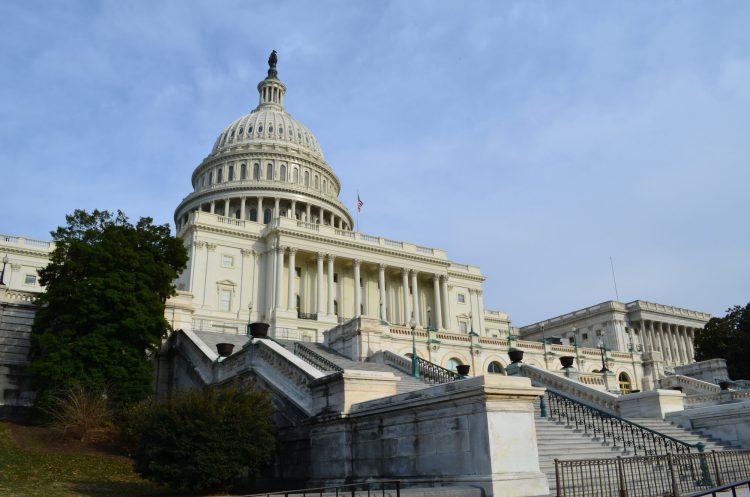Central to the nation’s long-term fiscal challenge is a changing demographic landscape that President Trump’s proposed budget fails to address, according to a guest column by Robert L. Bixby, executive director of The Concord Coalition, and Harold Janeway, a former state senator who serves on Concord’s New Hampshire Advisory Board. This article first appeared in The Nashua Telegraph (New Hampshire) on July 9, 2017.
President Trump’s first budget has come under fire from economists and policy experts for two main reasons: it features deep cuts to dozens of spending programs that are not growing very fast, and it used unrealistic economic growth projections to make the cost of his proposals add up without increasing the federal debt.
The common flaw of these proposals is a failure to appreciate the heart of the nation’s long-term fiscal challenge — a changing demographic landscape.
The number of Americans over the age of 65 is more than twice what it was 50 years ago. In the coming two decades, the population age 65 and older will grow by 93 percent, according to the Congressional Budget Office (CBO). In contrast, CBO projects that the population age 20-64 will grow by just 11 percent over that time.
This dynamic will drive up the cost of Social Security and Medicare, which the Trump budget leaves mostly untouched, while hampering potential economic growth.
Within 10 years, 45 percent of non-interest federal spending will go to people age 65 or older through Social Security, Medicare, Medicaid and federal civilian and military retirement. Such spending equals 37 percent of GDP today.
Meanwhile, the ongoing retirement of the baby boom generation will continue to slow the growth rate of the work force, which will slow potential economic growth from what it was in earlier decades.
The president’s budget assumes that a sustained 3 percent real growth rate in gross domestic product (GDP) is plausible within the next few years because that was the average annual growth rate in potential GDP between 1950 and 2016. The problem is that of this 3 percent, 1.4 percent – almost half – was attributable to a growing labor force. Going forward, the CBO projects this figure to be just 0.5 percent per year.
In addition to stifling growth, these changing demographics place an additional burden on the federal budget. There was little trouble financing Social Security and Medicare when the large baby boom generation was entering the workforce and paying taxes to support those programs. In 1960, there were five workers paying for each Social Security beneficiary.
But today that ratio has fallen from 5-to-1 to just 3-to-1. And over the next 20 years, as baby boomers continue to leave the workforce, the ratio will fall to just 2-to-1. The result is that Social Security (and Medicare, which serves a similar population) will consume an increasing share of federal spending.
In addition to covering more beneficiaries, health care programs like Medicare will have to contend with higher costs per beneficiary. In 2016, one in four eligible Medicare beneficiaries were 80 or older. Over the next 25 years, that will rise to one in three. Because older beneficiaries tend to have more expensive health care needs, this trend will further increase federal spending on health care programs that serve them.
Existing dedicated revenue sources are insufficient to cover these growing spending obligations. In 2017, Social Security and Medicare will require $344 billion in general federal revenues to finance their shortfalls — equal to 2.1 percent of GDP. By 2040, the annual shortfalls are projected to reach 4.2 percent of GDP.
These growing shortfalls, if left on autopilot, are simply not sustainable and threaten to crowd out other federal priorities. Yet instead of addressing them, the Trump budget concentrated the vast majority of its spending cuts on Medicaid, which serves a more vulnerable population than Medicare, and on non-defense discretionary spending, which currently comprises just over 15 percent of federal spending.
Over the next decade, spending on Social Security and Medicare combined is projected to grow by 4.4 percent of GDP under current law. Meanwhile, Medicaid is only projected to grow by 0.8 percent of GDP, while all other non-interest spending is projected to actually shrink by 1.3 percent of GDP.
Simply put, the Trump budget exempts the demographically driven causes of our long-term fiscal challenges from any hard choices, and instead proposes allowing the largest and most rapidly growing programs to crowd out other important priorities.
To secure these programs for future generations of beneficiaries, as well as preserving other critical functions of government, policymakers will need to increase revenues paid by working-age Americans, reduce benefits, or some combination of the two.
Ignoring our demographic challenges will not make them go away.
Continue Reading


